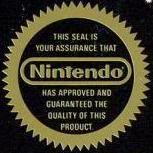BocoDragon
or, How I Learned to Stop Worrying and Realize This Assgrab is Delicious
As you say, RGB was not used anywhere but Europe. And let's reflect on the fact that the NES was a total afterthought in Europe.They didn't even put composite in to start with. The vast majority of TVs had no input for anything except RF in 1983, so there was no point thinking of video connectors or colour generation systems that would not be used. Sega's first two consoles didn't have RGB out either (they didn't even generate their colour in the RGB space at all). Heck until the mid 90s RGB was barely used anywhere but in Europe for any consoles.
The NES is hardest to get RGB from because while the computer uses the RGB space, the PPU generates a composite signal natively, not RGB that is then encoded to composite.
The first major system to actually have an RGB output is the Sega Mark III (from 1985), And it's not useable as-is, I've just done a big project to make it usable.
After Nintendo made the Famicom for the home market, their first overseas target was America. Not "the West", but America specifically. All of the design of the machine, and original games, were designed specifically to suit American tastes. Of course they re-packaged what they had done for America and shipped it in other countries later on (often through third party distributors like Mattel - even in Canada).... but something like RGB would never even be considered because Americans didn't have it.
The lack of focus Nintendo gave to PAL territories probably explains how Sega was able to carve out a foothold there.





